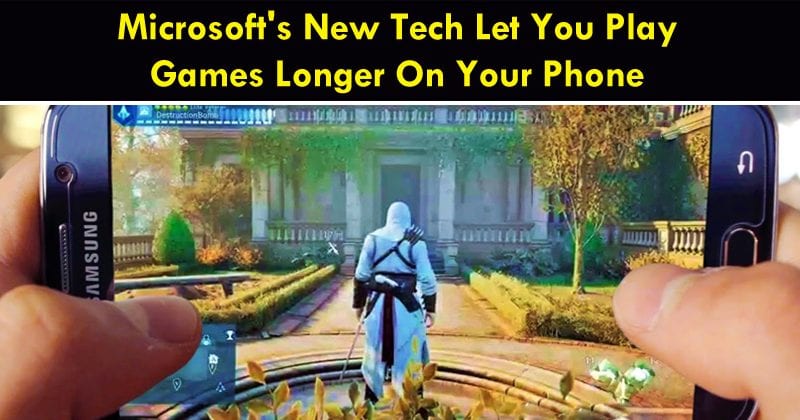Everyone knows that the best games for high-end mobile phones, sometimes rival consoles or PC, but the “price” of these graphics is the high power consumption of the GPU, which means that the autonomy of the phone or tablet get seriously affected. That is why now the tech giant Microsoft’s “Microsoft Research Asia” together with “Korea Advanced Institute of Science & Technology”, are working on a new system called Raven with which it aims to reduce the power consumption of mobile games without compromising the user experience. Thus, Raven is based on the idea that, although most games run at 60 fps, up to 50% of those frames look very similar to the rest that surrounds them on the screen, which means that the Processing power is wasted when generating these. Therefore, in reality, Raven is a novel system that takes advantage of human visual perception to scale the rendering speed of these frames.
Raven – Microsoft’s new technology to save energy when playing on mobile devices
More specifically, to achieve this, the technology introduces the use of “perception-aware scaling” or PAS, which regulates the speed of visualization of frames. All this allows a saving of energy reducing the speed of rendering of the frames of a game since it also predicts that the frames that we see are perceptibly similar to those that are discarded. It consists of three components: “Frame Difference Tracker”, “Rate Regulator” and “Rate Injector”. The first of them measures the similarity between two frames, the second predicts the level of similarity between the current frame and the next, and if the following frames are sufficiently similar to the current one, the third element limits this frame rate by inserting a certain delay in rendering processing, all in order to eliminate unnecessary frames. At the moment Raven can skip up to a maximum of three frames, and thus cause a drop in the frame rate to 15 fps (Frames per second). For all this, a series of previous studies have been carried out related to the perception of the human being when playing and a virtual screen was designed cloned from the screen of the mobile device, but with a much lower resolution. At the moment this technology is being tested in real life on a Nexus 5 phone, achieving a reduction of between 21.8% and 34.7% of energy consumption per game session in the terminal, all while maintaining the quality and user experience. So, what do you think about this? Simply share all your views and thoughts in the comment section below.
Δ


